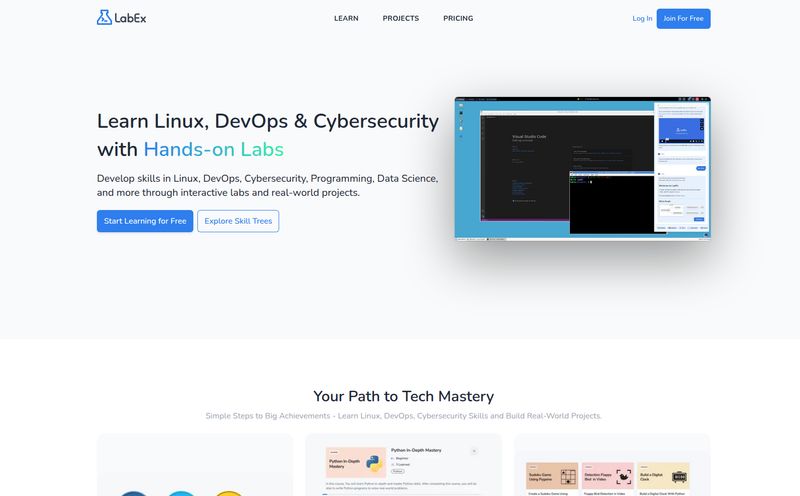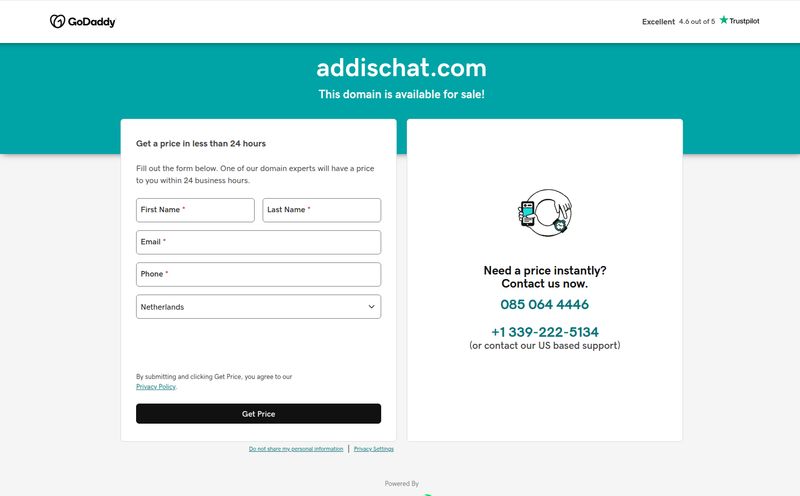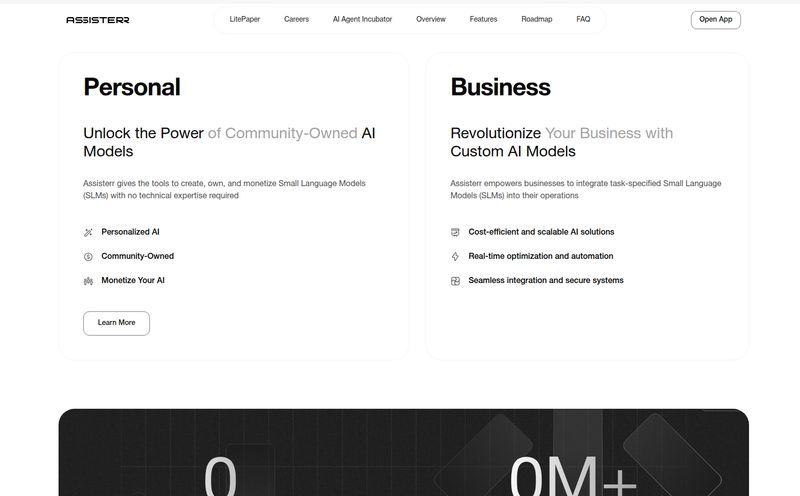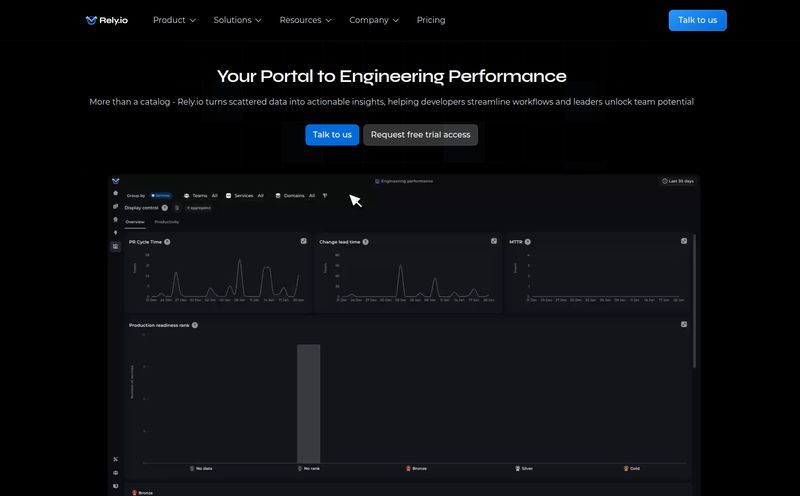Ah, the humble CSV. Comma-Separated Values. The digital duct tape of the data world. We’ve all been there, right? You get handed this massive data file — could be product inventory, user signups, last quarter's marketing spend, whatever — and it’s all locked up in a spreadsheet. It’s useful, sure, but it’s static. It’s a photograph when what you really need is a live video feed.
For years, developers and data folks have had a shared dream: a magic button that turns that static CSV into a living, breathing, query-able API. No setting up databases, no writing backend code, just... poof. Your data is now accessible via a URL. This is the holy grail for rapid prototyping, internal dashboards, and a thousand other little projects that don't justify a full-blown server setup.
So when I stumbled upon a tool simply named CSVAPI, my interest was piqued. The promise was exactly that: Instantly convert CSV files into APIs with filtering and data parsing. Simple. Elegant. Exactly what the doctor ordered. I had to know more.
What Was CSVAPI Supposed to Be?
The concept behind CSVAPI was brilliant in its simplicity. You upload a CSV file, and the platform instantly generates a REST API endpoint for you. This means you could suddenly access rows of your spreadsheet as if they were neat little JSON objects, ready to be pulled into your app, your website, or whatever you're building.
Think about the possibilities. You could have a list of conference speakers in a CSV, upload it, and immediately start building a 'meet the speakers' page on your event website. No database admin required. Or maybe you have pricing data you want to share with your sales team's custom-built calculator. Upload. API. Done. It's the kind of tool that acts like a bridge between the static world of spreadsheets and the dynamic world of web applications.
The Dream of Instant Data Access
I’ve personally spent hours, if not days, writing boilerplate code to parse a CSV, load it into a database, and then write the API endpoints to serve it. It’s tedious work. A tool like CSVAPI promises to turn that multi-hour slog into a 30-second task. That’s not just an improvement; it's a total game-changer for workflow efficiency.
So, I Went to Check It Out… And Found a Ghost Town
Here’s where our story takes a turn. Full of excitement about this potential new toy in my SEO and data toolkit, I headed over to the website. And I was greeted by… this:

Visit CSVAPI
A 404 Not Found error. The digital equivalent of a “Sorry, We’re Closed” sign on a dusty storefront. I tried the pricing page URL I had. Same result. It seems CSVAPI, at least for now, has vanished into the digital ether. It's a common tale in the world of neat little indie software projects; they burn bright and sometimes, they burn out.
But the idea is too good to let go of. So let's perform a bit of tech archaeology. What did CSVAPI promise, and why was it so appealing? And more importantly, where can we get that fix now?
What We Lost: The Promised Features of CSVAPI
Based on the information I could dig up, CSVAPI was built on a few really smart pillars that made it attractive.
First was the sheer speed and simplicity. The whole process was designed to be effortless. For anyone who's not a backend engineer, this is huge. It democratizes data, making it available to front-end devs, marketers, and analysts without needing to file a ticket with the engineering team. Another great feature was the built-in data parsing and filtering. It wasn't just about dumping the whole CSV. You could supposedly filter the results directly in the API call. Something like /api/users?city=NewYork. This is incredibly powerful, as it offloads the filtering logic from your application and puts it on the server, where it belongs. And finally, the siren song for all of us tinkerers: a generous free tier. The ability to kick the tires and build a proof-of-concept without swiping a credit card is how great projects get started.
The Potential Hurdles It Might Have Faced
Of course, no tool is perfect. One of the obvious limitations was that it was only for CSV files. In a world of JSON, XML, and Google Sheets, that might have been a bit restrictive. I also have to wonder about the limitations of the free tier. File size? Number of requests? These are the classic levers that freemium services pull, and without a working pricing page, it's all just speculation. Maybe the server costs for parsing large files on a free plan just became unsustainable. We may never know.
If Not CSVAPI, Then What? Great Alternatives
Okay, so CSVAPI might be a ghost. But the dream is alive and well! If you’re looking to turn a spreadsheet into an API, you have some fantastic, and very much active, options.
The goal isn't to find a specific tool; it's to solve a specific problem. The problem of trapped data is still here, and thankfully, so are the solutions.
Here are a few of my go-to's when I need an API from a spreadsheet, like, yesterday:
- Datasette: This is an incredible open-source tool from Simon Willison. It's a bit more hands-on, as you run it yourself, but it's ridiculously powerful. It takes a CSV (or a SQLite database), and builds a browsable web interface and a full JSON API around it, with faceting and filtering built-in. It's my personal favorite for serious data exploration.
- API Spreadsheets: This is probably the closest direct competitor to what CSVAPI aimed to be. You can upload a file or connect a Google Sheet and instantly get API endpoints for CRUD (Create, Read, Update, Delete) operations. It has a solid free tier and is super intuitive.
- Airtable: While not a direct CSV-to-API tool, Airtable is like a spreadsheet on steroids. Every base (their version of a spreadsheet) you create automatically has a pretty robust API. You can easily import your CSV into Airtable and you're off to the races. It’s a different workflow, but the end result is often even better.
- Sheety: If your data lives in a Google Sheet, Sheety is magic. It turns your sheet into a REST API in seconds. It's been my saving grace on more than one hackathon project.
Frequently Asked Questions
- What is a CSV to API tool?
- It's a service that takes a static CSV file as an input and generates a dynamic API endpoint. This allows you to request the data from the file programmatically over the web, usually in a JSON format.
- Why would I need to convert a CSV to an API?
- It's perfect for quickly building prototypes, powering internal dashboards, sharing data with a team in a standardized way, or feeding content into a simple website without needing to manage a full database.
- Is CSVAPI still active?
- Based on my checks, the website is currently returning a 404 error, which suggests it is not operational. It could be temporary, or the project may have been discontinued.
- Are there free alternatives to CSVAPI?
- Yes! Most of the alternatives mentioned, like API Spreadsheets, Airtable, and Sheety, have very functional free tiers that are perfect for smaller projects and testing. Datasette is open-source and completely free if you host it yourself.
- What are the security risks of turning a CSV into a public API?
- That's a great question. You should NEVER upload a CSV containing sensitive information (personal data, passwords, financial records). Most of these services are for public or semi-private data. Always check the platform's security and privacy policies, and assume any data you make into an API could potentially be seen by the public unless secured with an API key.
- Can I filter data with these tools?
- Most modern tools, including Datasette and API Spreadsheets, offer powerful filtering capabilities directly in the API call. This is a key feature to look for, as it makes the API much more useful.
A Final Thought on a Good Idea
So, while we may have to pour one out for CSVAPI, the spirit of the tool lives on. The need to liberate data from the confines of spreadsheets is more real than ever. It's a fundamental step in making data more accessible, more dynamic, and ultimately, more useful.
Whether you're a seasoned developer or a marketer trying to get a project off the ground, the tools are out there. Don't let a CSV file be the end of your data's story. With the right tool, it's just the beginning.
Reference and Sources
- Datasette: https://datasette.io/
- API Spreadsheets: https://apispreadsheets.com/
- Airtable: https://www.airtable.com/
- Sheety: https://sheety.co/



